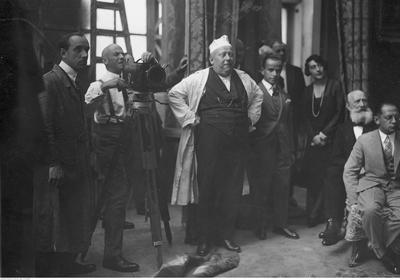He came from an assimilated Jewish family and graduated from law school and then started working at the Discount Bank. Aleksander Hertz was one of the co-founders of the Bank Employees Union. He supported the Polish Socialist Party, which was the reason for his fleeing abroad from Tsarist repression. During a year-long stay in Western Europe, he became acquainted with the then new business of cinematographs.
In 1909, Hertz came to Warsaw and, together with Alfred Ziberlast, Marek Zuker and Józef Koerner, established a company that opened the “Sfinks” cinema in Marszałkowska Street. Foreign productions could be seen there, but also short films shot on the streets of the city. In 1911, the “Sfinks” Film Studio was established. One of its first major productions was a screen adaptation of Eliza Orzeszkowa’s novel “Meir Ezofowicz”. Work on the next film, “The Defence of Częstochowa”, based on the novel by Henryk Sienkiewicz, was interrupted by the intervention of Russian censors. “Sfinks” eventually began to produce melodramas and comedies. With Hertz, Apolonia Chałupiec, who later became world-famous as Pola Negri, made her debut in the film Slaves of the Senses in 1914. In addition, the studio’s films featured such well-known Polish actors as Kazimierz Junosza-Stępowski, Wojciech Brydziński, Józef Węgrzyn and Stefan Jaracz. During the years of the Second Polish Republic, Hertz promoted, among others, Jadwiga Smosarska, who made her debut in 1919.
Accused of kitsch and flattering the unsophisticated tastes of mass audiences, the films of the “King of the Tenth Muse” were attended by thousands of spectators, and the actors who debuted in these pictures soon became real stars. The film studio went into decline after the death of its main founder, and although most of the films made at the Warsaw studio have not survived to the present day, Aleksander Hertz’s contribution to Polish cinematography is great. The director was buried in the Jewish Cemetery in Warsaw; his grave has been preserved.





